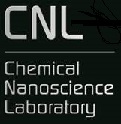Speaker Profiles
 Gunther Wittstock
Gunther Wittstock
- Professor Carl von Ossietzky University of Oldenburg
- Email: gunther.wittstock@uni-oldenburg.de
- Telephone: +49 (0) 441 798 3970
- University of Oldenburg Campus Wechloy (plan) Carl-von-Ossietzky-Strasse 9-11 Building W3, 1st floor 26129 Oldenburg Germany
Interfaces generally comprise only a tiny fraction of all atoms of a body, yet may decisively influence its properties and its interaction with the environment. Prominent examples are corrosion processes, switching processes in integrated semiconductor devices or the cell-cell comuinication in a living organisms. The Wittstock groups investigates local reactions at solid-liquid interfaces, in particular electrochemical reactions. Such reaction play an important role in several areas of application for which we search for a basic understanding.
- Electrochemistry of oxygen in energy conversion systems (fuel cells and metal air batteries)
- Reactions at biomaterial surfaces
- Assembly of molecules and nanoparticles at interfaces
- Photoelectrochemical energy conversion
- Electrochemical reactions of organic and metallorganic compounds
The rate of those reactions, i.e. the conversion rate of compounds at interfaces, can be influenced in various ways: mass transport in the liquid phase, bound catalysts at electrode surfaces, formation of ultrathin slective coatings and the use of unconventional reaction media.
We use classical voltammetric methods, scanning probe techniques (scanning force microscopy (AFM or SFM), scanning electrochemical microscopy (SECM), combinations of electrochemical and spectroscopic techniques (spectroelectrochemistry) and laser spectroscopy and microscopy

.png)



